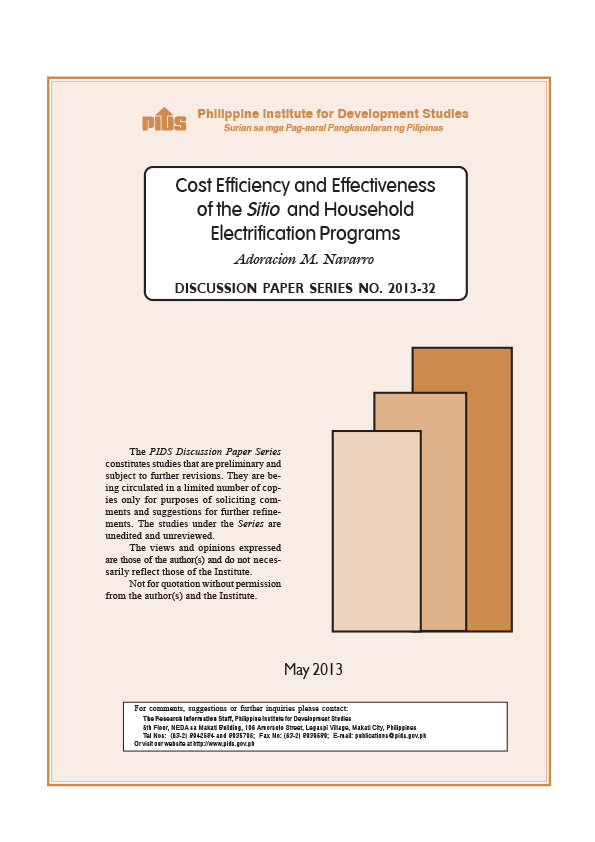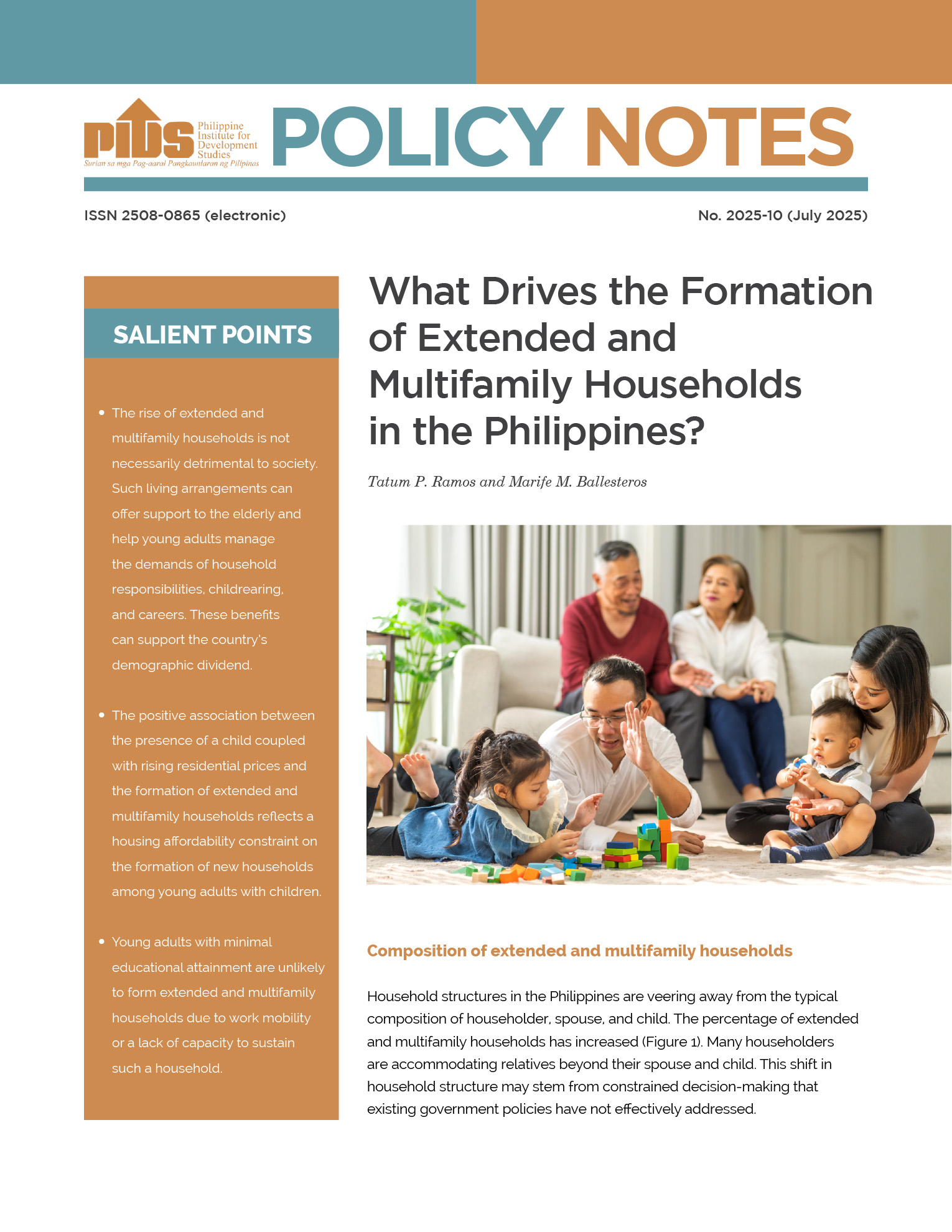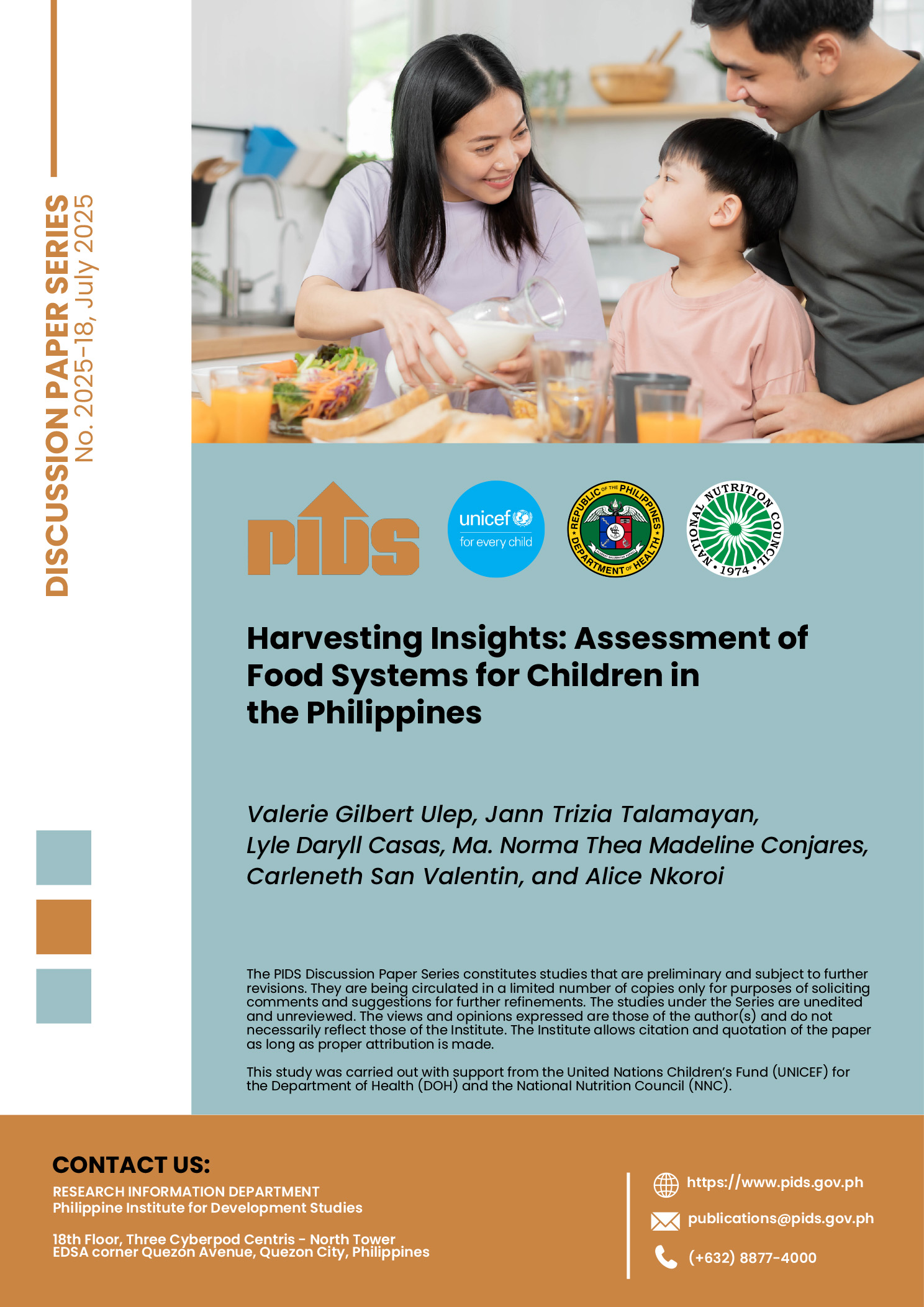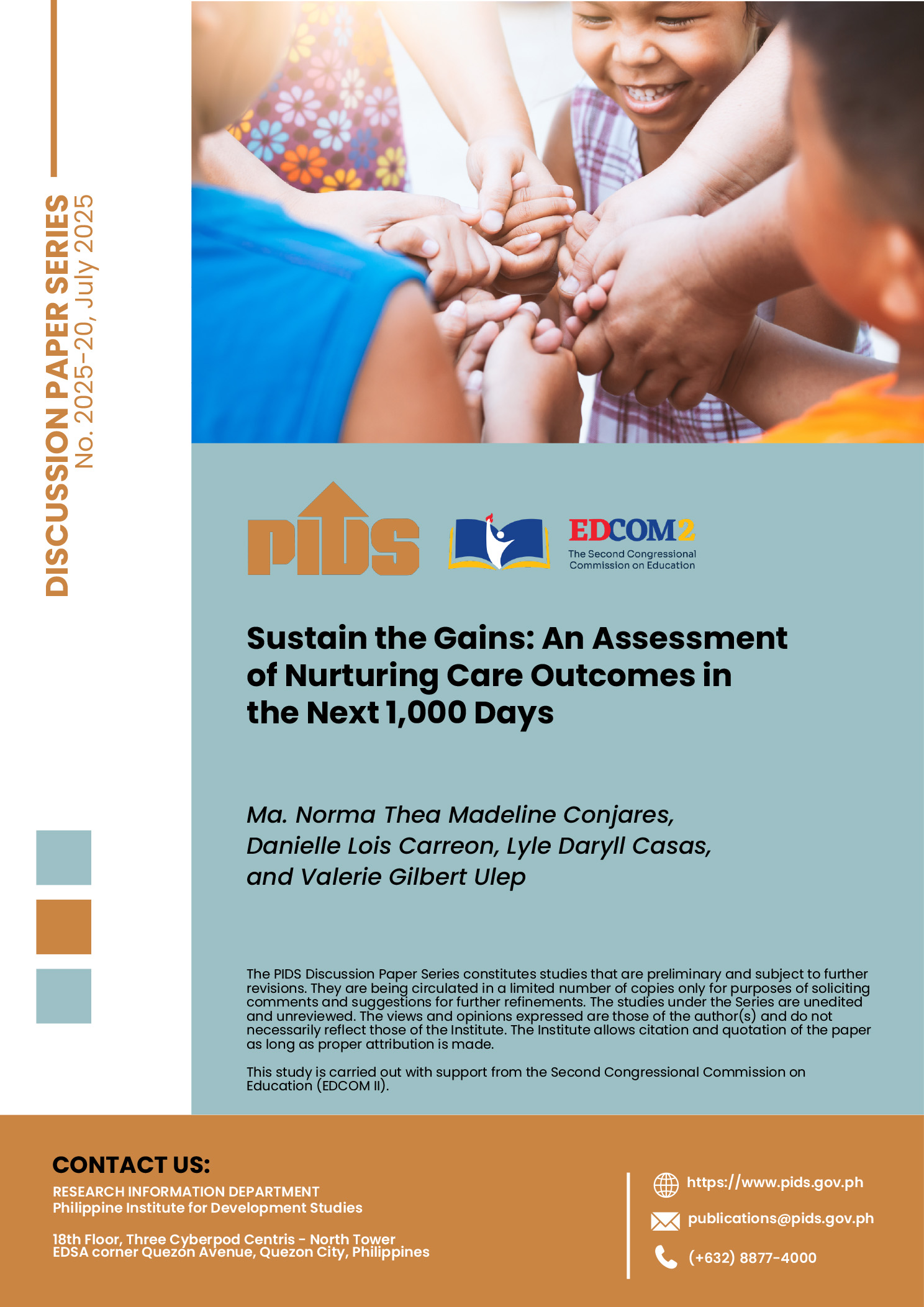The Sitio Electrification Program (SEP) and the Household Electrification Program (HEP) are two ongoing rural electrification programs of the government. To assist the Department of Budget and Management in implementing its zero-based budgeting approach, we assessed the 2011 SEP and HEP implementation. Using benchmarking for the efficiency and effectiveness assessment of program implementation, we find that the programs were able to achieve their 2011 targets and at reasonable costs. Using an econometric regression for studying the poverty reduction impacts of rural electrification in the Philippines, we also find evidence of a positive relationship between rural electrification and poverty reduction.
However, in order to meet the national electrification targets, the SEP and HEP implementation designs need to be improved. The SEP targeting system can be improved by using households as the ultimate basis for setting targets and then using the sitios as location identifiers for the household connections being targeted. Monitoring SEP and HEP accomplishments can be improved by including household dwelling units connected and households served in field reports. The social preparation component can also be strengthened by specifically identifying what constrains the households from connecting despite the presence of subsidies and then addressing the constraints in the program design. Prioritization can also be improved by giving importance to the presence of local enterprises that can raise economic activities and employment when prioritizing areas to be assisted.
The Expanded Rural Electrification Team should also be re-activated, but it should have a streamlined setup and the responsibilities of members should be assigned to positions in offices rather than to specific officials (so that the performance of duties can be sustained even after the officials have left). Lastly, given that the 2012 experience in the accelerated implementation of the SEP raises red flags on the absorptive capacity of the National Electric Administration and the electric cooperatives, decisionmakers may have to downscale the annual targets to more realistic levels and extend the implementation period to a more realistic duration.
Citations
This publication has been cited 1 time
- Navarro, Adoracion, Maxensius Tri Sambodo, and Jessie Todoc. 2013. Energy market integration and energy poverty in ASEAN. Discussion Papers DP 2013-50. Philippine Institute for Development Studies.













